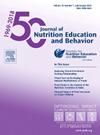Characterizing the Consumer Food Environment of Dollar Stores and Exploring Differences by Neighborhood Racial Composition
IF 2.3
3区 医学
Q2 EDUCATION, SCIENTIFIC DISCIPLINES
引用次数: 0
Abstract
Objective
To characterize the overall availability, price, and promotional placement of food and beverage products at dollar stores and explore differences in the food environment by neighborhood racial composition in Atlanta, Georgia.
Methods
A cross-sectional assessment of the food environment was conducted at 25 dollar stores. Measures included availability, affordability, and promotion of fresh produce, salty snacks, sweet snacks, sugar-sweetened beverages (SSBs), and water. Store neighborhoods were categorized as majority-Black (MB) or non-majority-Black (NMB) neighborhoods using American Community Survey data. Kruskal Wallis and chi-square tests (test of independence) were used to test for differences across neighborhood racial composition.
Results
Only 2 stores sold fresh produce, whereas all offered and most promoted sweet snacks, salty snacks, and SSBs. Compared with NMB neighborhoods, prices for SSBs and salty snacks were significantly lower in MB neighborhoods (P < 0.05).
Conclusions and Implications
The dollar store food environment lacks fresh produce and comprises largely unhealthy food options. Findings suggest dollar stores in MB neighborhoods may provide lower prices for unhealthy food and beverages.
一元店不健康消费食品环境特征及社区种族构成差异探讨。
目的:描述一美元商店中食品和饮料产品的总体可用性、价格和促销位置,并探讨佐治亚州亚特兰大市社区种族构成在食品环境中的差异。方法:对25美元商店的食品环境进行了横断面评估。措施包括新鲜农产品、咸零食、甜零食、含糖饮料和水的可获得性、可负担性和推广。根据美国社区调查数据,将商店社区分为多数黑人社区(MB)和非多数黑人社区(NMB)。使用Kruskal Wallis检验和卡方检验(独立性检验)来检验社区种族构成的差异。结果:只有2家商店出售新鲜农产品,而所有商店都提供并最受欢迎的甜零食、咸零食和ssb。与NMB社区相比,MB社区的ssb和咸味小吃价格显著低于NMB社区(P < 0.05)。结论和启示:一元店的食品环境缺乏新鲜农产品,主要包括不健康的食品选择。研究结果表明,MB社区的一元店可能为不健康的食品和饮料提供更低的价格。
本文章由计算机程序翻译,如有差异,请以英文原文为准。
求助全文
约1分钟内获得全文
求助全文
来源期刊
CiteScore
4.20
自引率
11.50%
发文量
379
审稿时长
44 days
期刊介绍:
The Journal of Nutrition Education and Behavior (JNEB), the official journal of the Society for Nutrition Education and Behavior, is a refereed, scientific periodical that serves as a global resource for all professionals with an interest in nutrition education; nutrition and physical activity behavior theories and intervention outcomes; complementary and alternative medicine related to nutrition behaviors; food environment; food, nutrition, and physical activity communication strategies including technology; nutrition-related economics; food safety education; and scholarship of learning related to these areas.
The purpose of JNEB is to document and disseminate original research and emerging issues and practices relevant to these areas worldwide. The Journal of Nutrition Education and Behavior welcomes evidence-based manuscripts that provide new insights and useful findings related to nutrition education research, practice and policy. The content areas of JNEB reflect the diverse interests in nutrition and physical activity related to public health, nutritional sciences, education, behavioral economics, family and consumer sciences, and eHealth, including the interests of community-based nutrition-practitioners. As the Society''s official journal, JNEB also includes policy statements, issue perspectives, position papers, and member communications.

 求助内容:
求助内容: 应助结果提醒方式:
应助结果提醒方式:


